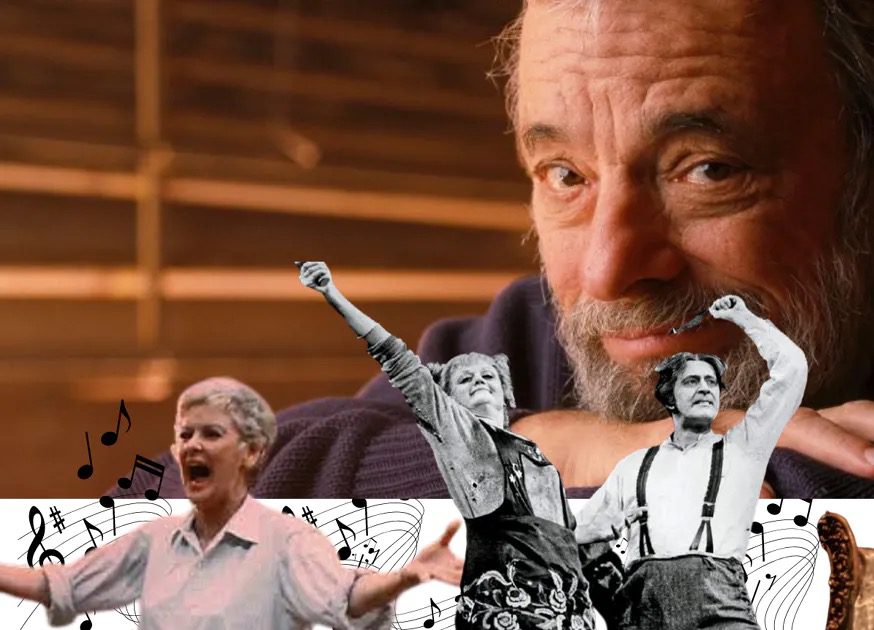
One of my favorite artistic heroes, the composer and lyricist Stephen Sondheim died recently. When I heard the news, a wave of grief washed over me. I’d admired his work for many years, but I’d never met him so why did I feel like I’d lost a dear friend? I read and listened intently to the eulogies offered by famous people who knew him and asked myself, why is this such a loss to me? I know that his songs have many intersections and connections with my life and major events in it so maybe that’s why it feels people should be asking me how I’m taking the news of his death.
Thinking back to the intense grief reaction of friends, and thousands of fans when the singer Prince died, when Whitney Houston left too soon, and the Beatle John Lennon was murdered, (on my son Kevin’s 17th birthday as it turned out) –It seems the death of a celebrity, especially a musician, impacts us because in their popularity, we feel we know them, and more importantly, their music has become intertwined with significant events in our lives. The songs we heard while students in school or courting the person that turned out to be our spouse, take us back on each re-hearing to those feelings and that time.
I scurried to learn more details of Sondheim’s life and the processes he used to make a major impact on the Broadway Musical Theatre which I love. References to Sondheim weren’t hard to find as the broadcast airwaves, print media, and online streaming platforms were filled with interviews and examples of his lyrics and music from the past 60 years. In the process I learned of influences on my life I didn’t realize where somehow connected to him.
Forty some years ago when my husband and I found one another and faced opposition from friends and family to our union, a song from West Side Story offered hope and encouragement. “There’s a place for us (Somewhere) a place for us, peace and quiet and open air, time to live, time to share.” It became, and still is, “our song.”
When the show was originally produced in 1957, when Sondheim was just 27 years old, he did not get credit for being the lyricist, so I just realized through my recent research, that those words that meant so much too us were his. Part of Sondheim’s genius was to give the actors in the play exquisite conversational dialogue to sing. His accompanying music enhanced the mood and the message.
My youngest son, Ken was a musical theater actor and fan of Sondheim. At several important transition times in my life, he would slip me an envelope containing a tape of one of Sondheim’s songs. It would deliver just the message he wanted to send, and that I needed to hear. In 1987, when Into the Woods was first produced, I faced an especially difficult career
challenge, having been denied tenue and my husband and I were just beginning our own clinic.
The song, “No one is alone,” with its messages of “People make mistakes thinking they’re alone,” and “someone is on our side, someone else is not,” comforted me from my automobile’s cassette player as I ran the errands I needed to do to create my new life.
There was a song from Rent, one of Ken’s favorite shows, that always brought tears when it was played during my Zumba class. It’s called “Seasons of Love,” and the lyrics, “Five hundred twenty-five thousand, six hundred minutes,” ask the question, “how do you measure a year?” The answer is Love. Though this is not a Sondheim song, I just learned that Sondheim was mentor to its author, Jonathan Larson. So how do you measure a life, so generous and far flung?
I was reminded of the quirky show Sweeney Todd that my son Ken had starred in as a 20s something actor at a community theater in Dallas. He played the young boy who sang to an older woman “Nothing’s gonna harm you, not while I’m around…..Demons are prowling everywhere, nowadays…But nothing’s gonna harm you, not while I’m around.” There are always tears of sweet sorrow that flow whenever I hear this song since my son is no longer around, but I’m hoping that, like Sondheim, as I remember him, he’s not too far away.

